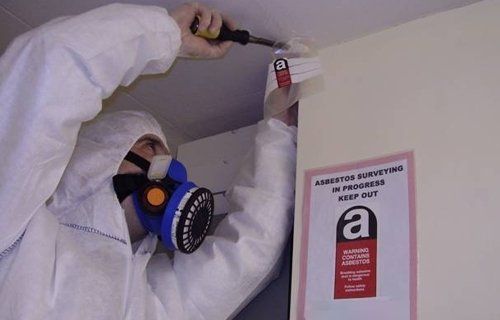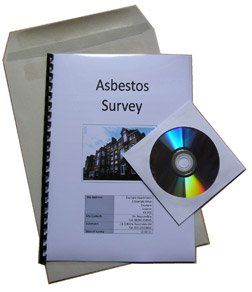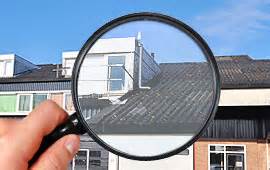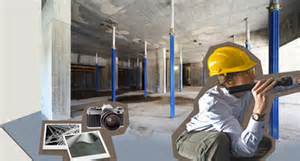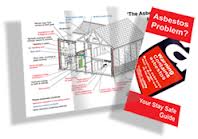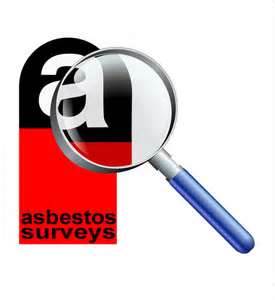The
Control of Asbestos Regulations 2012 (CAR 2012)
set out the Duty to Manage Asbestos. This imposes a duty of care to suitably manage asbestos within non-domestic properties and also the communal areas of domestic dwellings, such as blocks of flats. If you as an individual, or your business or organisation are responsible for non domestic premises or domestic dwellings which have communal areas within them, and are responsible for building maintenance and repairs, you are the "Duty Holder" in terms of the regulations.
Any buildings built or refurbished before the year 2000 may contain asbestos. All non-domestic buildings should have an asbestos survey to comply with the law.
Every commercial building or a building for domestic use with communal areas are required to have an asbestos register in place and available for inspection by employees or tradespeople working on site. The regulations are designed to protect employees and visitors from the dangers of asbestos in the workplace.
Many UK insurance companies are now requiring that employers can demonstrate that an Asbestos Risk Assessment has been carried out on their premises and may refuse to renew your policy unless you have identified any potential asbestos risks and developed an Asbestos Management Plan.
Local IDEA
provides an impartial and independent asbestos surveying and consultantcy service and is not directly connected with any other asbestos survey or removal companies.
Asbestos Surveys
Asbestos is the single greatest cause of work-related deaths in the UK. It is legal requirement that all owners and occupiers of commercial property and property for domestic use containg communal areas have an asbestos survey carried out to determine the presence of asbestos in the property and to set out a plan for managing any asbestos found. This can mean just ensuring that the asbestos is not disturbed and managed or it can mean the removal and safe disposal of the asbestos containing material.
Your duties do not just stop because you have had a survey carried out in your premises, they are only just starting, you have to manage the asbestos that you have found and ensure that everyone from employees, contractors and members of the public are fully protected.
All new homes completed after the 6th April 2008 require a different EPC to that of existing residential dwellings. For these properties an on construction EPC (OCEPC) is required to meet Building Regulation completion requirements and marketing new homes for sale or to rent for the first time after their completion.
New properties marketed for sale while still under construction, such as off plan sales require a Predictive Energy Assessment (PEA). This shows a predicted energy efficiency rating and environmental impact rating for the property from SAP calculations done at the initial design stage.
Additionally commercial buildings marketed for sale or to let are required to have a non domestic EPC. The NDEPC must be made available for a commercial property when any written particulars are requested or viewings are made of a property. For any new build commercial projects an SBEM calculation is required to show compliance with Part L of the Building Regulations at the design stage, with a final NDEPC issued on completion.
An Energy Performance Certificate must be commissioned and made available whenever residential or commercial properties are constructed, sold or rented out.
An Energy Performance Certificate can also be produced for properties under the new Energy Company Obligation scheme. It is a new mandatory requirement under the Energy Act 2011 for all large gas and electricity suppliers to fund energy efficiency improvements to certain category dwellings in the UK.
Local IDEA can undertake and provide 3 types of asbestos survey report -
Management Survey - Low intrusive standard sampling identification
An asbestos management survey is a standard sampling survey. The purpose is to locate and identify as far as reasonably practicable any suspected asbestos containing materials within a premises which could be damaged or disturbed during normal occupancy, including foreseeable maintenance and installation and to assess their condition.
The extent of intrusion will vary between premises and depend on what is reasonably practicable for individual properties, i.e. it will depend on factors such as the type building, the nature of construction, accessibility etc.
The survey will usually involve some sampling and subsequent analysis to confirm the presence or absence of asbestos, a Management Survey will also additionally involve presuming the presence or absence of asbestos, from visual inspection and material recognition experience alone. A management survey can be completed using a combination of sampling ACMs and presuming ACMs or, indeed, just presuming.
The Management Survey includes an assessment of the condition of the identified ACM''s and their ability to release of fibres into the air if they are disturbed in some way. This ''material assessment'' will give a good initial guide to the priority for managing ACMs’ as it will identify the materials which will most readily release airborne fibres if they are disturbed.
The management survey will provide a risk based assessment to address any possible health hazards and forms the bases for the asbestos management plan to be completed by the duty holder, to comply with their obligations under the Control of Asbestos Regulations 2012 (regulation 4).
A further Refurbishment & Demolition survey will be required however if more extensive maintenance and repair is required, which involve structural layout changes to buildings (e.g. removal of partitions, walls, units etc).
Refurbishment and Demolition - Fully intrusive sampling identification
A refurbishment and demolition survey is required before any building refurbishment or demolition work is carried out. This type of survey is used to locate and describe, as far as is reasonably practical, all ACMs in the area where the refurbishment work will take place or in the whole building if demolition is planned.
The survey will be fully intrusive and involve destructive inspection, as necessary to gain access to all areas, including those that may be difficult to reach. A refurbishment and demolition survey may also be required in other circumstances e.g. when more intrusive maintenance and repair work will be carried out for plant removal or dismantling.It is a disruptive and fully intrusive survey which may need to penetrate all parts of the building structure. Aggressive inspection techniques will be needed to lift carpets and tiles, break through walls, ceilings, cladding and partitions, and open up floors. In these situations, controls should be put in place to prevent the spread of debris, which may include asbestos.
There is a specific requirement in the Control of Asbestos Regulations 2012 (regulation 7) for all ACMs’ to be removed as far as reasonably practicable before any major refurbishment or final demolition. The survey information should be used to help in the tendering process for removal of ACMs’ from the building before work starts.
The survey report should be supplied by the client to any building designers and contractors who may be bidding for the work, so that the asbestos risks can be addressed.
In this type of survey, where the asbestos is identified so that it can be removed (rather than to ''manage'' it), the survey does not normally assess the condition of the asbestos, other than to indicate areas of damage or where additional asbestos debris may be present. However, where the asbestos removal may not take place for some time, the ACMs’ condition will need to be assessed and the materials managed.
Property Pre Purchase Survey -
Before a purchase of a property, Local IDEA advises the instruction of an asbestos management survey before the exchange of contracts. This survey is is conducted as an asbestos management survey as previously described, but it also provides an estimated cost for asbestos removal if required. This cost can influence the purchase price of the property. This asbestos survey ensures any financial implications, are acknowledged before the purchaser becomes the duty holder.
The asbestos survey and associated risk assessments are used to produce the asbestos management plan, which details and records what actions to take to manage the risks from asbestos. Assistance with the post survey management plan can be provided by Local IDEA to help building owners and managers in meeting their obligations under the law, with an agreed asbestos register review and ongoing risk assessments of the building in which asbestos containing materials (ACM`s) have been identified.
Asbestos & The Duty Holder
It is the responsibility of the Duty Holder of commercial premises to manage any asbestos present in the building and hold relative information in an Asbestos Register. Therefore, it is recommended that a survey of a building for Asbestos Containing Materials is undertaken to identify any present and an appropriate management risk assessment put in place thereafter. All buildings (excluding private residential and private rented residential properties) require a register of asbestos containing materials detailing the location, extent and condition of the materials within the building.
The company surveyor is fully qualified to undertake all types of asbestos survey and is a registered member of the British Occupational Hygiene Society (BOHS) through it`s Faculty of Asbestos Assessment and Management (FAAM) scheme.
If you are not the dutyholder but have information about the building, you must co-operate with the dutyholder, eg leaseholders must allow managing agents access for inspection. It is now illegal to use asbestos in the construction or refurbishment of any premises, but many thousands of tonnes of it were used in the past and much of it is still in place. There are three main types of asbestos that can still be found in premises, commonly called ‘blue asbestos’ (crocidolite), ‘brown asbestos’ (amosite) and ‘white asbestos’ (chrysotile). All of them are dangerous carcinogens, but blue and brown asbestos are more hazardous than white. Despite their names, you cannot identify them just by their colour.
Breathing in air containing asbestos fibres can lead to asbestos-related diseases, mainly cancers of the lungs and chest lining. Asbestos is only a risk to health if asbestos fibres are released into the air and breathed in. Past exposure to asbestos currently kills around 4500 people a year in Great Britain. Workers who carry out building maintenance and repair are particularly at risk.
The person responsible for a building (The Duty Holder) is required to manage the risk from asbestos by:
- Identifying asbestos containing materials within the premises and assessing their condition.
- Presuming materials contain asbestos unless there is strong evidence that they do not.
- Maintaining an up to date record of the location and condition of the asbestos containing materials and presumed asbestos containing materials within the premises.
- Assessing the risk from the material.
- Preparing and implementing a plan detailing how the risk from asbestos containing materials is to be managed.
- Reviewing and monitoring the management plan.
- Providing information on the location and condition of asbestos containing materials to anyone liable to work on or disturb them.
Any building likely to contain asbestos containing materials must be surveyed under the regulations. Buildings constructed before 1999 may contain limited asbestos products and buildings built before 1985 may contain substantial quantities of asbestos.
The management survey results must be recorded and updated as a written register of asbestos containing materials, click this link for an example.
The risk that these materials pose to users of the building must be assessed and any recommendations made by the surveyor from these risk assessments, must be completed.
If you own, occupy, manage or have responsibility for a building which may contain asbestos you have either a legal duty to manage the risk from asbestos containing materials; or a duty to co-operate with whoever manages that risk.
Where Asbestos may be present

Current Asbestos Safety Legislation:
The Control of Asbestos Regulations 2012 (CAR2012) prohibit the importation, supply and use of all forms of asbestos. They continue the ban introduced for blue and brown asbestos in 1985 and for white asbestos in 1999. They also continue to ban the second-hand use of asbestos products such as asbestos cement sheets and asbestos boards and tiles; including panels which have been covered with paint or textured plaster containing asbestos.
Non-compliance with the regulations above will lead to penalties including the closure of works by HSE inspectors, unlimited fines for companies responsible, and fines of up to £20,000 or even imprisonment for individuals responsible. These might appear extreme measures but asbestos is potentially a very dangerous substance, in the UK, 3,500 people die each year as a result of exposure to asbestos.
On 6 April 2012, the asbestos regulations were revised and became the Control of Asbestos Regulations 2012
The main change from the previous 2006 regulations was the introduction of a new classification for works.
Previously, works on asbestos containing materials were either Licensed (requiring a licensed contractor to carry them out) or non-licensed,which means that any competent contractor can carry them out. Now, there is a new classification called
Notifiable Non-Licensed Work which affects some non-licensed work, where the risk of fibre release is greater. What this means is that in certain circumstances, the Health & Safety Executive (HSE) will need to be formally notified of the works you are planning to carry out.
The HSE needs to be notified 14 days in advance of any planned asbestos removal works. For guidance on the classification of works, click on this link
In addition, you need to keep brief notes of the works that are being carried out on the asbestos containing materials and it would be good practice to update the asbestos register at the same time. By 2015, there is an additional requirement for all workers involved in Notifiable Non-Licensed asbestos works to be under medical supervision.
In all cases, whether previously non-licensed works come under the new Notifiable Non-Licensed Work classification, will ultimately depend on the material type and the condition – in essence, if the condition of the material is poor, or likely to become poor because of the works, then it will probably be notifiable.
Asbestos: Legal Advice to Landlords
The landlord of a tenanted property has a legal responsibility to manage the risk associated with any asbestos present in the property and to take appropriate steps to deal with it if necessary. Landlords as Dutyholders have responsibilities for asbestos under two sources of legislation.
The Control of Asbestos Regulations 2012 imposes responsibilities on the landlord as Dutyholder with respect to the external and communal areas of multiple-occupation dwellings. The Defective Premises Act 1972 addresses landlords responsibilities within a domestic property itself.
Although The Defective Premises Act does place specific duties on a landlord in respect of asbestos in their property, The Environmental Protection Act (EPA) 1990 defines statutory nuisance as “any dust…likely to cause injury…to the public”. The Act gives local authorities, through Environmental Health Officers (EHOs), the power to serve abatement notices where premises are in such a state as to be prejudicial to health, or a nuisance.
This summary necessarily brief and is not intended to replace the full explanation of the responsibilities as set out by the full wording of the legislation, the appropriate Approved Codes of Practice and the summation of legal interpretations.
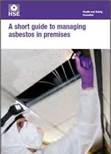
For a copy of the HSE guide to Managing Asbestos In Buildings, click on this link
Who is this guidance for?
This guidance is for, anyone who is responsible for maintenance and repairs in a building, which may contain asbestos. The ‘duty to manage’ asbestos is included in the Control of Asbestos Regulations 2012. You are a ‘dutyholder’ if:
■ You own the building;
■ You are responsible through a contract or tenancy agreement;
■ You have control of the building but no formal contract or agreement; or in a multi-occupancy building, you are the owner and have taken responsibility for maintenance and repairs for the whole building.
What buildings are affected?
■ All non-domestic buildings, whatever the type of business.
■ The common areas of domestic buildings, eg halls, stairwells, lift shafts, roof spaces. ■ All other domestic properties are not affected by the duty to manage.
If you don`t manage the Asbestos Containing Materials present in your premises, you could be putting your employees and other peoples health at risk !
Local IDEA - 07818 060350 - A good IDEA for your property assessment
